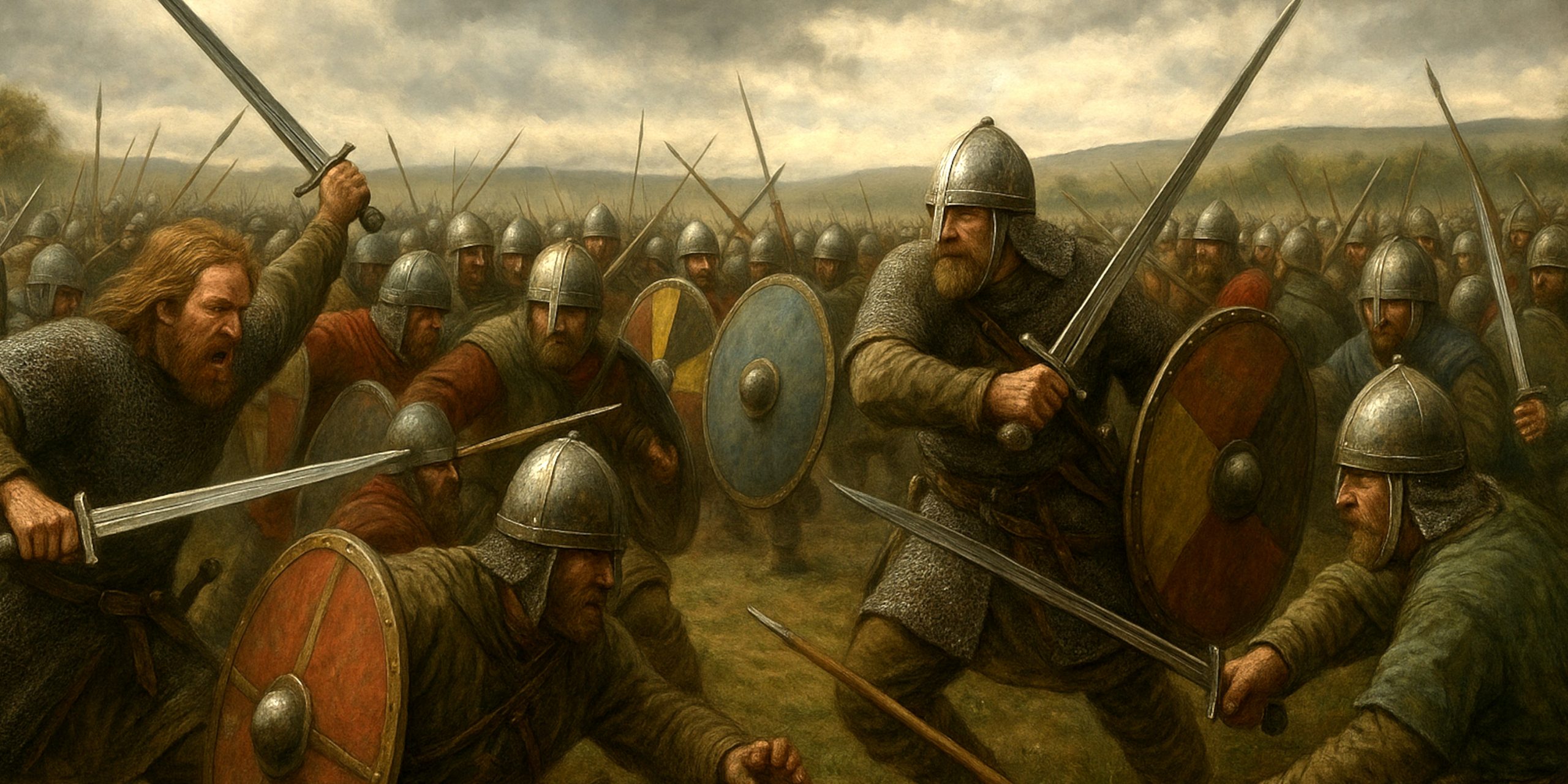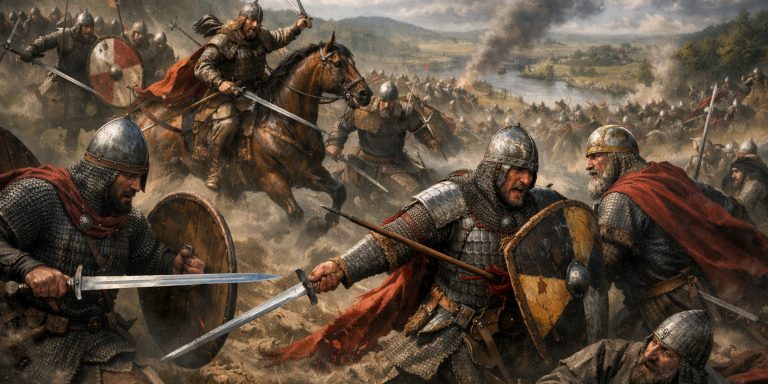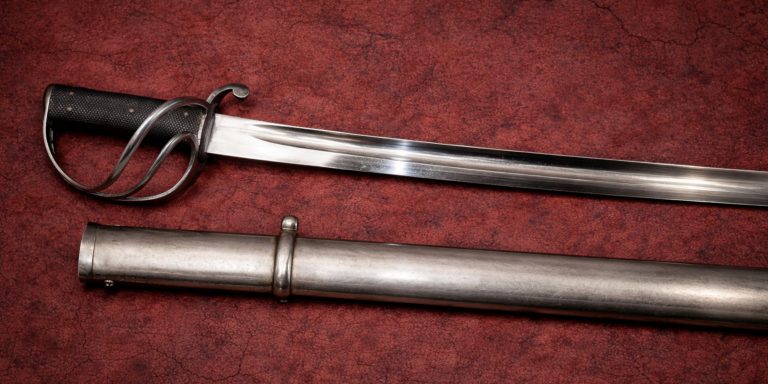
The Battle of Assandun, fought in October 1016, was one of the final and most consequential clashes of Anglo-Saxon England. It marked the decisive moment in the long war between King Edmund Ironside and the Danish invader Cnut the Great. The result was not merely another victory in a campaign of raids, but the fall of an entire dynasty. By the end of the battle, England’s fate would rest with a foreign king.
Background
After years of Danish incursions and English resistance, 1016 saw the culmination of a brutal struggle for the English crown. Edmund Ironside, the son of Æthelred the Unready, fought to reclaim his father’s fractured realm. Cnut, son of the Danish king Sweyn Forkbeard, sought to finish what his father began: the conquest of England.
The campaign was one of desperate marches, shifting allegiances, and fatigue. Edmund’s forces had fought five major engagements before Assandun, making this the sixth and final confrontation. The Anglo-Saxon Chronicle gives a tone of exhausted resignation when it records that “there was a great slaughter on either side.”
Location and Terrain
Assandun’s exact location has long been debated. The likeliest site is Ashingdon in Essex, though others propose Ashdon near Saffron Walden. Both are elevated positions with open slopes, suitable for shield-wall combat. The Chronicle simply calls it æt Assandune, “at the hill of ashes”, which feels appropriately grim for a battlefield where the kingdom burned for the last time under Anglo-Saxon rule.
Forces
| Side | Commander | Estimated Strength | Composition | Notable Nobles |
|---|---|---|---|---|
| England (Anglo-Saxons) | King Edmund Ironside | 6,000–8,000 men | Thegns, household warriors, fyrd militia from Wessex and Mercia | Eadric Streona (Mercia), Godwin (future Earl of Wessex), Ulfcytel Snillingr (Norfolk) |
| Danes (Invasion Army) | Cnut the Great | 6,000–8,000 men | Danish housecarls, Norse mercenaries, East Anglian allies | Thorkell the Tall, Eiríkr Hákonarson, Ulf Jarl |
Arms and Armour
Both sides were equipped in the typical early 11th-century style, blending Anglo-Saxon and Norse martial traditions.
Armament Overview:
| Type | Description | Typical Example |
|---|---|---|
| Swords | Double-edged, broad-bladed with fuller. Favoured types: Petersen Type X and XI. Decorated hilts in higher ranks. | Viking sword or spatha variants, around 80–90 cm in length. |
| Axes | Dane axes with elongated blades for two-handed use. Common among Cnut’s housecarls. | Breiðøx (broad axe) – deadly in the press of shield walls. |
| Spears | The most common weapon, used for both throwing and thrusting. | Angon or lancea, often 2–3 m long. |
| Shields | Round wooden shields with iron bosses. Painted or leather-covered. | Carried by nearly all troops. |
| Armour | Mail shirts, nasal helmets, leather tunics. The wealthier wore coats of rings. | King’s guards would be heavily mailed. |
The clash at Assandun would have been one of shield-walls meeting with the dull thud of oak on oak, followed by the glittering panic of swords breaking through.
The Battle
The sources describe a fierce, chaotic struggle. The English initially held the high ground, but treachery decided the day. Eadric Streona, the notorious ealdorman of Mercia, is said to have betrayed Edmund mid-battle, withdrawing his men and causing the English line to collapse.
John of Worcester later wrote that “the Danes gained the victory through the treachery of Eadric.” It was a familiar pattern: Eadric had changed sides more times than a wind-blown banner.
The Chronicle reports simply, “there Cnut had the victory, and all the English nation fought against him.” But by then, England’s unity was a memory. Edmund fought valiantly, reportedly “as one possessed,” yet was forced to retreat. Within weeks, he agreed to divide the kingdom with Cnut, only to die shortly after, leaving Cnut the sole ruler of England.
Battle Timeline
| Timeframe | Event |
|---|---|
| Early October 1016 | Edmund gathers forces from Wessex and Mercia, determined for a final stand. |
| Mid-October | Cnut marches south with Danish and Norse contingents, meeting Edmund at Assandun. |
| Morning of Battle | Anglo-Saxons form the shield wall on elevated ground; Danes advance uphill. |
| Midday | Eadric Streona’s withdrawal causes panic; English right flank collapses. |
| Afternoon | Edmund fights a desperate defence but is surrounded. Many thegns are slain. |
| Evening | Cnut holds the field; the English remnants retreat to the west. |
| Aftermath | Edmund and Cnut meet at Olney or Deerhurst to negotiate peace. Edmund keeps Wessex; Cnut takes the north. Within months, Edmund dies. |
Contemporary Quotes
“There was great slaughter on either side. King Edmund went thence with his following into Wessex, and Cnut held the field.”
– The Anglo-Saxon Chronicle, entry for 1016
“Through treachery the victory went to the Danes.”
– John of Worcester, Chronicon ex Chronicis
“Never was there greater treachery than at Assandun.”
– Henry of Huntingdon, Historia Anglorum
Archaeology
Archaeological evidence for the battle remains inconclusive, but several sites in Essex bear hallmarks of large-scale conflict. Finds near Ashingdon include weapon fragments and burials from the early 11th century. The church of Ashingdon, said to have been built by Cnut himself in memory of the fallen, still stands on a hill overlooking the likely battlefield.
Its dedication to St Andrew, Assandun being sometimes rendered Ashendon-St-Andrew, matches later medieval accounts. If local folklore is to be believed, “the church was raised where the ravens feasted.” Charming.
Legacy
Assandun marked the effective end of Anglo-Saxon independence. Cnut’s rule would bring England into a North Sea empire stretching from Denmark to Norway. Ironically, his reign was relatively stable, marked by law and church reform, and a surprising degree of continuity.
Eadric Streona, meanwhile, met the fate that betrayal usually invites. Within a year, Cnut had him executed, reportedly saying he would “reward him as he had earned.” Even the Danes had limits to their tolerance for duplicity.
Assandun stands as a turning point, the moment the English monarchy became Scandinavian in all but name. It was a battle fought with the old weapons of an older world, swords, shields, and the shield wall, and ended with a new kind of kingship that would echo through the next century.
Summary Table
| Category | Detail |
|---|---|
| Date | October 1016 |
| Location | Likely Ashingdon, Essex |
| Result | Danish victory |
| English Commander | Edmund Ironside |
| Danish Commander | Cnut the Great |
| Outcome | England divided, then unified under Cnut |
| Significance | End of Anglo-Saxon sovereignty, rise of the Danish kingship |
The Seven Swords Takeaway
The Battle of Assandun was the curtain call for the house of Wessex and the final sigh of an England still shaping itself. The land was weary, its nobles fickle, its peasants tired of feeding armies that promised protection but delivered ruin.
When Cnut stood upon the hill after the battle, surveying the field strewn with English dead, he became more than a conqueror. He became, ironically, England’s next great king. History has a sense of humour, though often a cruel one.
Watch the documentary:



